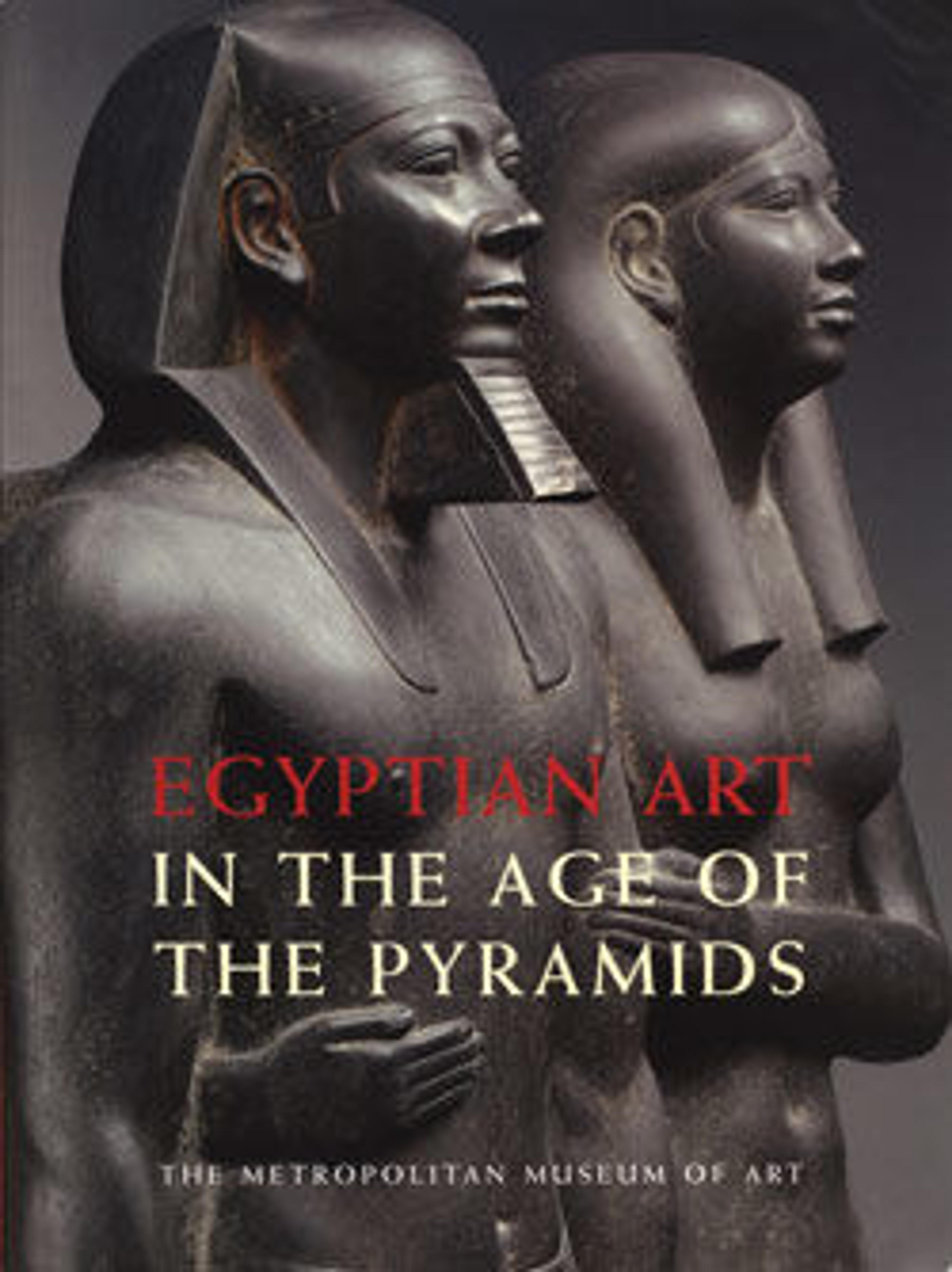Statue of Kneeling Captive
Beginning at least in the mid-Fifth Dynasty, large sculptures of bound foreign captives appeared in the pharaoh's pyramid complex. Pepi I and Pepi II had great numbers of them. This piece and the associated piece 64.260 can be dated to the reign of Pepi II for stylistic reasons.
Statues of prisoners were presumably placed in areas where battle and triumph scenes occurred. The consistency of the breaks on these figures at the neck or shoulder and midtorso argue strongly that the statues were ritually executed, presumably to mark some event in the history of the pyramid complex.
Although stereotypes of foreign physiognomies clearly existed during the Old Kingdom, they do not correspond well with those known and identified by ethnicity from the New Kingdom. This man may represent an enemy from adjacent lands in the north or a Near Easterner. The muscles of his upper body have been stretched out of shape by lashing his elbows behind his back, and he wears an expression that seems to convey profound resignation.
Statues of prisoners were presumably placed in areas where battle and triumph scenes occurred. The consistency of the breaks on these figures at the neck or shoulder and midtorso argue strongly that the statues were ritually executed, presumably to mark some event in the history of the pyramid complex.
Although stereotypes of foreign physiognomies clearly existed during the Old Kingdom, they do not correspond well with those known and identified by ethnicity from the New Kingdom. This man may represent an enemy from adjacent lands in the north or a Near Easterner. The muscles of his upper body have been stretched out of shape by lashing his elbows behind his back, and he wears an expression that seems to convey profound resignation.
Artwork Details
- Title: Statue of Kneeling Captive
- Period: Old Kingdom
- Dynasty: Dynasty 6
- Reign: reign of Pepi II
- Date: ca. 2246–2152 B.C.
- Geography: From Egypt, Memphite Region, Saqqara, Pyramid complex of Pepi II probably
- Medium: Limestone, paint
- Dimensions: H. 88.5 cm (34 13/16 in.); W. 33 cm (13 in.); D. 49.5 cm (19 1/2 in.); Weight 90.7 kg (200 lbs)
- Credit Line: Fletcher Fund, 1947
- Object Number: 47.2
- Curatorial Department: Egyptian Art
More Artwork
Research Resources
The Met provides unparalleled resources for research and welcomes an international community of students and scholars. The Met's Open Access API is where creators and researchers can connect to the The Met collection. Open Access data and public domain images are available for unrestricted commercial and noncommercial use without permission or fee.
To request images under copyright and other restrictions, please use this Image Request form.
Feedback
We continue to research and examine historical and cultural context for objects in The Met collection. If you have comments or questions about this object record, please contact us using the form below. The Museum looks forward to receiving your comments.
